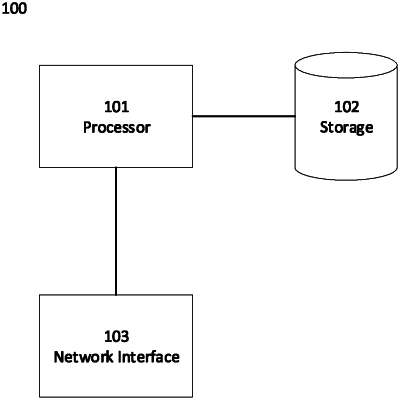| CPC G06N 7/01 (2023.01) [G01R 31/2825 (2013.01); G06F 40/30 (2020.01); G06N 20/00 (2019.01); G16H 50/20 (2018.01)] | 20 Claims |

|
1. A system for generating a statistical model for fault diagnosis, comprising:
at least one hardware processor, adapted to:
extract a plurality of structured values, each associated with at least one of a plurality of semantic entities of a semantic model or at least one of a plurality of semantic relationships of the semantic model, from structured historical information organized in an identified structure and related to at least some of a plurality of historical events, the semantic model comprising said plurality of semantic entities, each corresponding to at least one entity of an ontology of an identified diagnosis domain, and each of the plurality of semantic relationships is a directional relationship assigning a source semantic entity to a destination semantic entity of the respective relationship;
extract a plurality of unstructured values, each associated with at least one of the plurality of semantic entities or the plurality of semantic relationships, from unstructured historical free text information related to at least some of the plurality of historical events;
generate input data to train the statistical model, derived from the semantic model, from the plurality of structured values and the plurality of unstructured values;
train the statistical model by inputting thereto the input data; and
output the statistical model for use in a system for processing digital data comprising a plurality of representations of a plurality of observations related to the identified diagnosis domain, each representation selected from a group comprising a digital representation and a textual representation for the purpose of diagnosing a fault in a diagnosable entity of the identified diagnosis domain;
wherein some of the plurality of semantic entities are each a member of a group of identified semantic entities consisting of: at least one observable phenomenon (a symptom), at least one dysfunction (a problem), at least one factor influencing a probability of a structural or functional relationship between two of the plurality of semantic entities (an influencing-factor), at least one symptom detail (an issue), and at least one location;
wherein the statistical model comprises a plurality of nodes, each representing one of some of the plurality of semantic entities, connected by a plurality of edges, each representing one of some of the plurality of semantic relationships;
wherein the some of the plurality of semantic entities are each one of a group consisting of: a problem of the group of identified semantic entities, a symptom of the group of identified semantic entities, and an identifying-factor of the group of identified semantic entities;
wherein each of the plurality of nodes has a Boolean occurrence value indicating an occurrence of the node; and
wherein every symptom node of the plurality of nodes, representing a symptom of the plurality of identified semantic entities, and every problem node of the plurality of nodes, representing a problem of the plurality of identified semantic entities is assigned a local probability model that associates a probability with the Boolean occurrence value of each of the plurality of nodes.
|